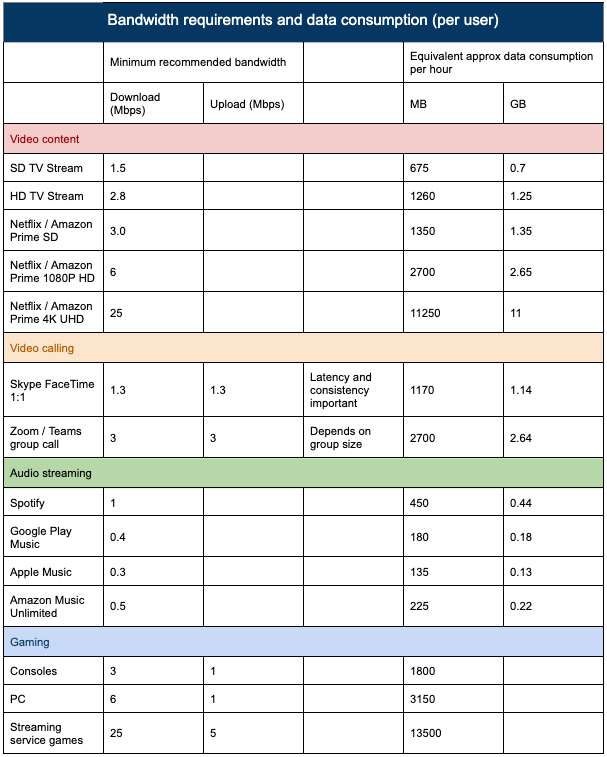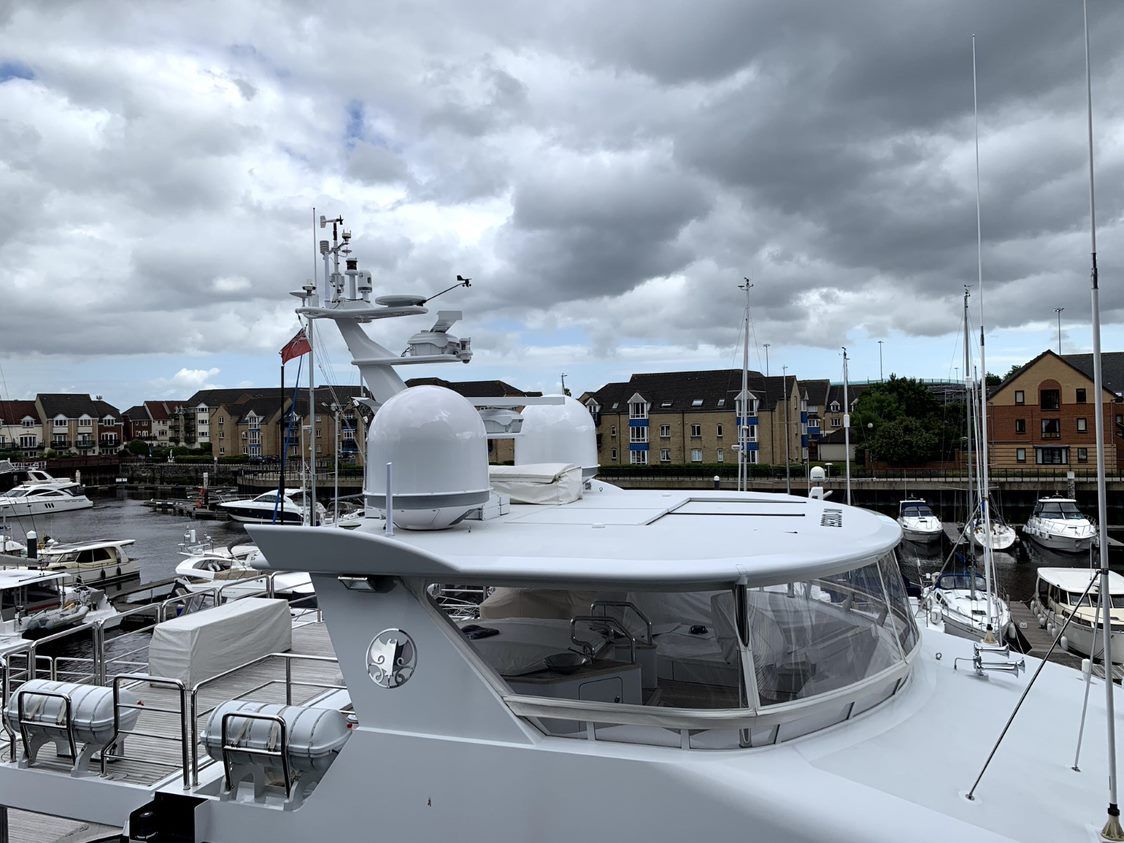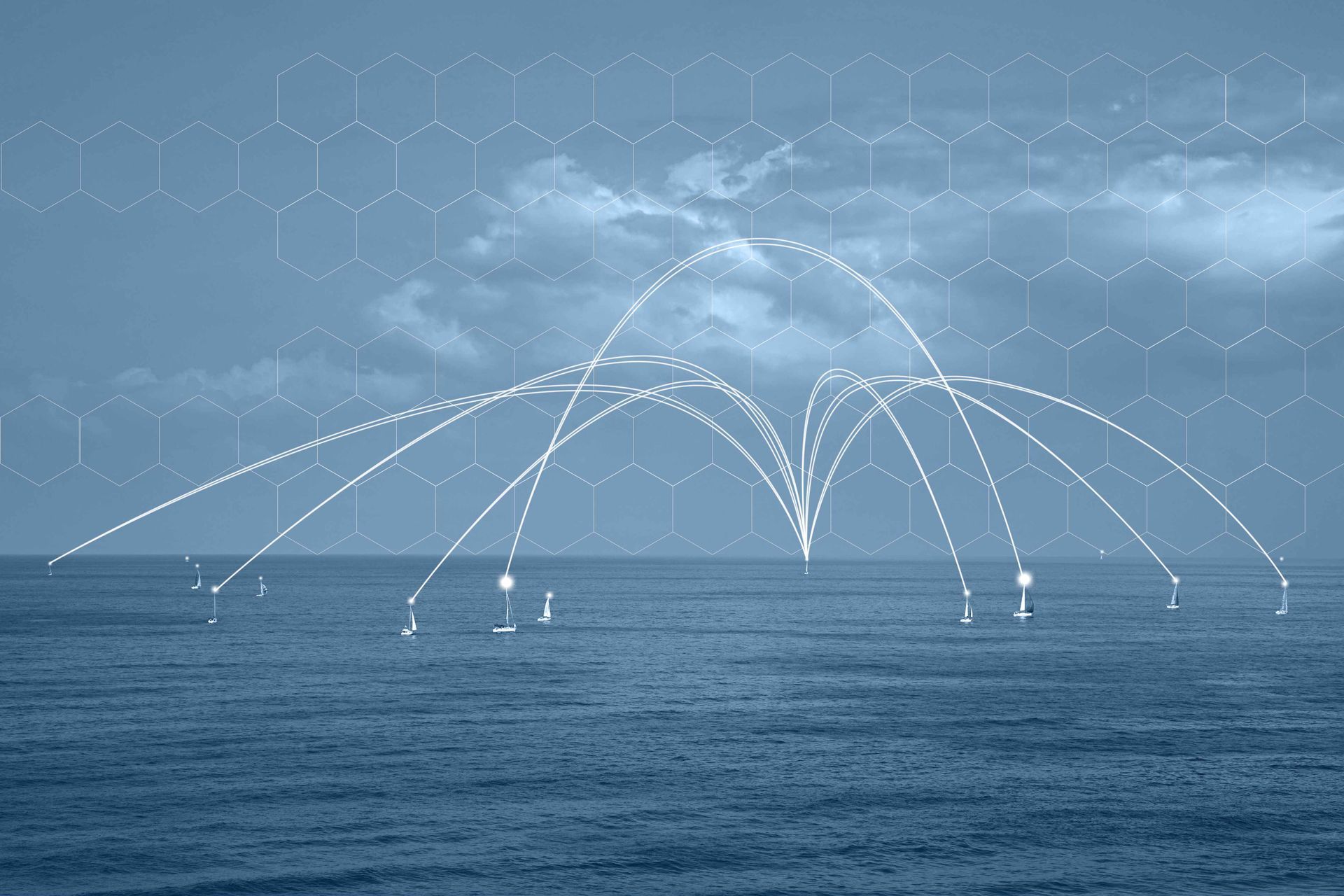How Superyachts Stay Connected With Wi-Fi
While some may value the seclusion and privacy of a luxury yacht charter, the majority of guests expect to remain connected to the internet even whilst at sea.
But how do superyachts provide that Wi-Fi?
There are six main methods of connecting your vessel to the internet, including four that can be used whilst out at sea (cellular data - 4G & 5G coastal only, VSAT, Inmarsat, Iridium, and some exciting new disruptive players on the horizon), and two that can be used while docked in a marina (shoreline connection and port Wi-Fi).
If you’re interested in hearing more about it all and how it works on board, you’ve come to the right place. However, if you have further questions, please don’t hesitate to give us a call on +44 1420 460461.
Context
The key parameter that we will refer to many times throughout this blog is ‘bandwidth’: the maximum flow of data possible down (and up) an internet connection’s ‘pipe’.
Historically, we have an understanding of typical file sizes; text emails a few KB (Kilobytes), PDF documents a few hundred KB to a couple of MB. Bandwidth was only really a concern regarding the time it would take to upload/download a file, but today with so many of our applications being live rather than downloaded, content bandwidth has become a critical number where a minimum bandwidth is required to facilitate such applications. Here are a few examples of approximate bandwidth demands from regular devices/programmes, along with the data consumed.

Cellular data
The main advantage of 4G and 5G cellular data is the significant level of affordable bandwidth it provides. The more bandwidth you have, the faster and more efficiently your internet performs—which ultimately leads to a better guest experience. Because of this, 5G cellular data is a preferred method of connection for many vessels.
5G is also a significantly cheaper (cost per MB and hardware) alternative to satellite communications, which are not only more costly for the data but also require the installation of expensive and often large form-factor hardware. 5G is also favoured among many vessels because of its advanced speed relative to 4G, and its increased user capacity.
However, there are also some disadvantages of 5G cellular data to be considered. For example, while many popular destinations/marinas are working towards having 5G infrastructure, there are still many that do not currently have 5G available from any cellular network. With that in mind, best practice dictates that any 5G installations are backward compatible so that in the absence of 5G signal, the vessel will still be able to connect to LTE-A Pro, LTE-A, 4G LTE, and even 3G signals.
The performance gains of cellular data and network performance accelerated notably in the 4G (aka LTE; acronym for Long Term Evolution) development cycle with significant improvements in the coastal range, bandwidth, and device support.
Not all 4G modems are equal! 4G modems can range from Category 1 to Category 20 although in most cases entry level 4G (LTE) modems start at Cat-4 with a theoretical maximum speed of 150/50mbps down/up. LTE-A starts around Cat-6 and uses MIMO to double the downlink maximum to 300mbps. Category 20 delivers up to 2000/300mbps, achieving this through LTE-A Pro enhanced carrier aggregation, but like all the above specifications, it’s only possible to achieve under ideal conditions. So, for mobile and marine users, the higher category modems mean being able to connect to all relevant LTE technologies gives the best chance of a good link.
5G is the latest (fifth generation) iteration of the cellular industry’s network, which relies on a New Radio technology (NR) to improve yet further on what LTE has been delivering since 2008. The headline-grabbing nanowave speeds will only be for densely populated spaces like stadiums and events where so many users will be looking for simultaneous connections and where the radio waves simply cannot propagate over any distance. But we can expect that the gains seen in 4G will be subtly enhanced in terms of range, we should see lower latency once the 5G network infrastructure is mature and more devices will be capable of the gigabit performance levels offered by the best 4G products.
In all cases, correct installation with high-quality antenna arrays in optimal location, short high specification RF cabling and a good cellular network provider are all key factors to success. Burmarc is experienced in all of these critical attributes and can offer tailored solutions for your application.
Any network SIM cards are also a superb weapon in the armoury as a backup to an unlimited data SIM for your primary preferred network. Having a SIM that will connect to any UK network when the primary SIM is unable to connect expands the capability of the cellular solution significantly.

VSAT
The VSAT is the most expensive method of internet provision while at sea, but that’s because a VSAT satellite is incredibly reliable and will keep you constantly connected to the internet wherever your vessel is located. Leveraging high-performance geostationary satellites, the challenge for VSAT providers was to get satellite operators to point costly transponder beams at the sea where there were far fewer users to service. But as data demands increased globally and the business case for marine users became more compelling, operators provided the coverage for all the key shipping lanes and passages around the globe.
There are three main categories of VSAT satellite connection: C-band, Ka-band and Ku-band. C-band connections require a large antenna to maintain global coverage and perform the best in poor weather conditions compared to the other bands, however, C-band data rates are slow by modern standards. Ka-band connections have the quickest speed of all three bands, and Ku-band systems offer great all-round performance in smaller antennae and are deployed in settings where there will be high levels of demand for the Wi-Fi. Many superyachts have this connection as standard because of the multiple satellites, high bandwidth and seamless global coverage offered by some solutions.
The advantage of VSAT connections is that they provide vast coverage on every vessel, the services are mature and the vessel can choose from tariffs with unlimited data at a fixed bandwidth, or pay per MB for best-effort, high-speed offerings—and in some cases a combination of both of these channel types.
Technological advances have also meant reduced antenna sizes. KVH offers systems with dishes as small as 37cm, while their 60cm and 1m dishes offer both unlimited and high-speed channels independently and simultaneously with speeds as high as 10/3mbps and 20/3mbps respectively

Inmarsat
Historically the global leader in maritime satellite communications, Inmarsat has been challenged for supremacy at sea by significant improvements in VSAT offerings and their much lower cost-per-MB compared to Fleet Broadband.
The current generation of i6 satellites service the FleetXpress service, which is based on Ka-band and L-band connections. This ensures fast throughput on the ka-band under normal conditions and L-band for a weather resilient low-speed link.
Iridium
Iridium has been in operation for 20 years and, although it had a shaky start, remains a useful, truly global satellite provider for voice and data services. The latest generation of Iridium Certus systems can offer 700/300kbps download and upload speeds respectively, as well as voice and SMS services. Iridium also became GMDSS-approved and now offers Global Maritime Distress services on specific terminals. The mature fleet of 66 operational (and nine spare) LEO satellites provide full global surface coverage. Cost per MB is prohibitive to use as a primary data source for large volumes of data, but as a backup it has been a popular solution to commercial shipping and leisure craft alike.

Shore connection and port Wi-Fi
The shore connections should provide the best opportunity for an optimal internet connection while alongside, but the performance of these links varies from location to location—some harbours provide excellent infrastructure while others have severe limitations and get congested at busy times. In most cases, they should be the cheapest cost per MB of all the options, and if a good-quality uncapped link is available then this provides a great chance to carry out any device updates, synchronise cloud drive folders and download content for your next trip. Of course, you cannot take this service with you and even the Wi-Fi won’t be connecting you when more than a couple of hundred meters from the quay.
Whether a wired or wireless shore link, it is worth ensuring the vessel is capable of connecting to these services when they are strong enough to provide the potential benefits.
Starlink, OneWeb, et al.
Starlink has been grabbing the attention of land and marine users alike, offering cellular performance connection via satellite (LEO - Low Earth Orbit satellites). Hundreds of mbps download speeds, and tens of mbps upload speeds, is similar to LTE-A (4.5G) performance, and interestingly it often delivers latency of a similar magnitude to cellular links. Cost per MB is pretty low for residential and RV users but the marine and business grade services are looking to be comparable to other satellite providers. Currently in the EU, marine systems and services are not yet offered and the population of satellites is still being deployed so geographic coverage is still limited for now. Like Iridum, the satellites pass overhead, meaning a very broad view of the sky is needed for optimal performance. This makes good installation locations tricky to find on sailing yachts (this is true of other satellite systems too and well-performing solutions are often provided using dual antenna arrays).
OneWeb has just launched another payload of 40 satellites into LEO and they plan to complete all launches to finalise the fleet during 2023, so we can expect to hear much more about this player and the service’s benefits over the coming months. We’ll be adapting our approach in terms of providing the right solutions as these exciting new opportunities become stable and beneficial to deploy.
Amazon is also set to launch its own internet-via-satellite service soon to compete with the others, so the outlook is encouraging for a highly competitive spacescape, which promises better performance at more affordable prices.
Hybrid solutions
In reality, no single link type can fulfil the varied data demands of modern life aboard a superyacht, so the real objective is to provide multiple links that can be selected based on application/user/device or other criteria, and then match the performance demands and best value proposition to fulfil the need.
In terms of least-cost routing, your priority links might look like:
Shore link > Cellular > VSAT unlimited > VSAT Highspeed/Fleet Xpress > Iridium
These tie up with the distance from shore that each service can offer, with VSAT being regional or near-global and Iridium being pole-to-pole global coverage.
However, your requirement may be to provide a minimum bandwidth and stability for a business operational need where bonding multiple connections from different links can ensure that critical business applications and latency-sensitive sessions like video calls are always available.
Crew welfare in the maritime industry has been recognised as a key to staff retention and offering the ability to WhatsApp loved ones at home during the pandemic has been incredibly valuable to those working on board. An unlimited modest bandwidth subscription can facilitate this at a known cost for the owners.
KVH’s new TracNet H-series is a product line that recognises the need to combine the potential of multiple link types and we’ll be using these in conjunction with Peplink Routers to add further links to the mix. This ensures that, for each vessel, the right performance-cost ratio can be reliably delivered. Being a scalable approach means we’ll also be able to introduce the new LEO and MEO services and make use of their USPs alongside the dependability of the mature operator’s services.
The Burmarc team is heavily invested in providing clients with the highest-quality connectivity solutions. So, if you’re interested in learning more about the options available to you for marine internet provision, don’t hesitate to get in touch with us via our website, or email us at sales@burmarc.co.uk for more information.



